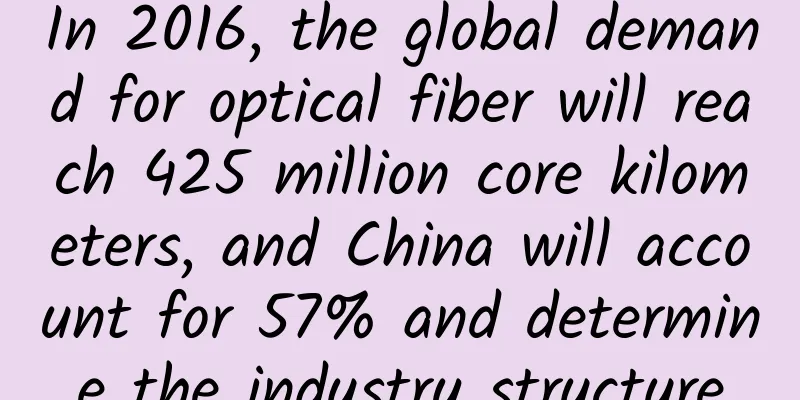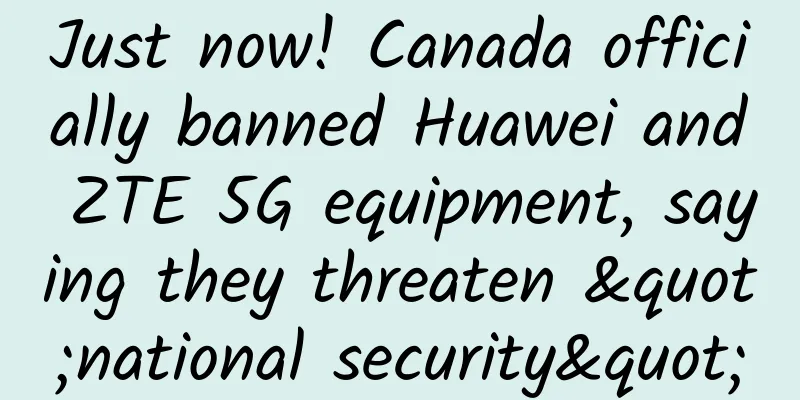In 2016, the global demand for optical fiber will reach 425 million core kilometers, and China will account for 57% and determine the industry structure

|
December 12 morning news (Jiang Junmu) The global demand for optical fiber and cable will reach 425 million core kilometers in 2016, of which China will account for 57%, predicted John Johnson, president of CRU China. At the 2017 Hengtong Group Media Interaction Conference on the 11th, Johnson delivered a keynote speech entitled "The Chinese Market Determines the Global Optical Fiber and Cable Industry Landscape", sharing CRU's view on the current status and future prospects of the global optical fiber and cable market, and particularly emphasized that "China accounts for the largest share of global optical fiber demand" and "as China's demand is higher than expected, global optical fiber and cable demand will hit a new high in 2016." The report said that the global demand for optical fiber and cable has exceeded 400 million core kilometers, and China's strong demand is still the main driving force, which will continue to lead the global growth trend. The demand in North America and the Asia-Pacific market outside China has maintained an upward trend; the demand growth in Western Europe has increased significantly, and the Eastern European market is also gradually recovering. At the same time, China's fiber optic deployment is developing at an extraordinary speed. Johnson compared it with the United States, saying that China's cumulative fiber optic installation volume is comparable to that of the United States, but in a very short time. With the widespread coverage of 4G and fiber-to-the-home, will China's fiber optic cable growth reach saturation? CRU believes not. From 2010 to 2015, the average annual growth rate of global Internet traffic reached 29%, which means that fiber optic cable as infrastructure will still be the focus of investment. The huge demand is one thing, but more importantly, China's cable manufacturing industry is also rising strongly. Chinese manufacturers are expanding their production capacity at an astonishing rate, and they are also maintaining an aggressive attitude in optical fiber preforms. Johnson pointed out that several large preforms will be put on the market in 2017, but before that, the shortage of preform supply will limit the growth of demand to a certain extent. Other highlights of the report include: active fiber-to-the-home deployment has stimulated demand for optical cables in many countries and regions; the tight supply has limited the rapid growth of demand to a certain extent; in the future, developing communications markets will attract more investment in optical fiber cables; and the demand for submarine cables will continue its strong upward trend. “The pace of upgrading has not stopped, and the decline is still far away. Industry experts once predicted that fiber-to-the-home would be the ‘end’ of fiber optics development; today we see 5G, the Internet of Things and a series of new technologies emerging - which means that high-density needs exist not only in home networks.” Johnson concluded. |
<<: Woman connected to WiFi and received a huge bill: Some WiFi is actually charged
Recommend
Everything You Should Know About Computer Networks for Your Job Interview
"Are you ready for the interview?" &quo...
User Datagram Protocol (UDP) in plain language
What is UDP? UDP is the abbreviation of User Data...
Behind Baidu’s keyword search: Be aware of fraud risks and borrowing costs being raised in disguise?
[[387830]] Has Baidu failed to fulfill its duty i...
RAKsmart server flash sale starts from $30/month, 1-10Gbps unlimited traffic server starts from $149/month, VPS 50% off
This month, RAKsmart continues the previous activ...
edgeNAT newly launched South Korea SK direct connection VPS with 20% discount on monthly payment and 30% discount on annual payment, 2G memory package starts at 48 yuan/month
edgeNAT has newly launched the Korean three-netwo...
Do you know how wireless networks developed?
MediaTek recently released its flagship 5G mobile...
spinservers: $109/month - 2*E5-2650L v3 CPU, 64G memory, 1.6T SSD hard disk, 10TB/10Gbps, San Jose data center
If you need a high-end server, you can also take ...
New breakthrough in 5G technology: The cost of millimeter wave equipment has been greatly reduced, and antennas can be directly "printed"
Researchers at Georgia Institute of Technology, N...
Halfway through 2021, China Broadcasting and Television 5G begins to accelerate
2021 is already halfway through, and China Radio ...
Computers won’t lie. If something is abnormal, there must be something fishy going on!
A few days ago, the product guy gave me feedback ...
Say goodbye to manual operations! Use Ansible user module to efficiently manage Linux accounts
In an enterprise operation and maintenance enviro...
Domestic developers report: Apple App Store suspected of infringement and monopoly
On August 7, a team of domestic developers and le...
Nielsen: 5G enters a period of accelerated development, new scenarios give rise to new consumer demands
Recently, Nielsen, a global monitoring and data a...
HostDare: 35% off VPS on CN2 GT line in Los Angeles, 10% off VPS on CN2 GIA line
HostDare has sorted out its VPS product inventory...
China Internet Development Report 2020: 1.3 billion netizens make online payments totaling 24.9 trillion yuan
Recently, at the 2020 (19th) China Internet Confe...









